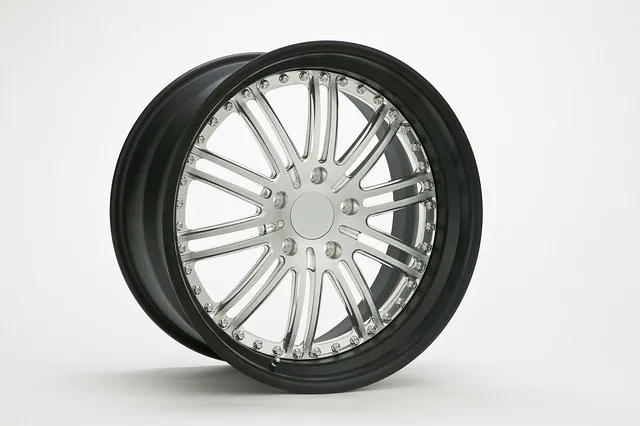Vehicle coverage plans offer car owners enhanced protection beyond standard warranties, with comprehensive and collision coverage options. Comprehensive plans protect against non-accident damages, while collision coverage safeguards against accidents with exclusions for certain causes. Extended warranties provide all-encompassing peace of mind for routine maintenance and sudden repairs. When choosing a plan, consider covered components, vehicle age/mileage, and value; review terms carefully to avoid pitfalls. Compare plans thoroughly, considering mechanical repairs, roadside assistance, deductibles, and customer reviews, to find budget-friendly comprehensive protection. Real-life examples highlight the success of these plans in protecting cars from damage and saving costs.
“In today’s fast-paced world, securing your vehicle investment is a smart move. Explore the realm of Vehicle Protection Plans (VPPs), designed to safeguard your vehicle against unforeseen repairs and maintenance costs. This comprehensive guide offers an in-depth look at VPPs, breaking down complex information into understandable sections. From ‘Understanding Vehicle Protection Plans’ to ‘Comparing Different Dealers,’ you’ll discover the benefits of extended warranties, learn crucial factors for selection, and even avoid common pitfalls. Uncover the secrets to finding the perfect vehicle coverage that suits your needs.”
Understanding Vehicle Protection Plans: A Comprehensive Overview

Vehicle protection plans, also known as extended warranties or vehicle coverage, offer crucial peace of mind for car owners. These plans go beyond the standard manufacturer’s warranty, providing comprehensive protection against unexpected repair costs and mechanical failures. By understanding what’s covered under these plans, drivers can make informed decisions to safeguard their investments.
Comprehensive vehicle coverage typically includes various components such as engine repairs, transmission services, accident damage, and even roadside assistance. Some plans may also offer perks like rental car coverage during repairs, tire replacement, or protection against theft and natural disasters. Knowing the specific details of a plan’s terms and conditions is essential, as exclusions and limitations vary widely between providers.
Types of Vehicle Coverage: What's Included and Excluded

When considering a vehicle protection plan, understanding the different types of coverage and what they include is crucial. These plans typically fall into two main categories: comprehensive and collision. Comprehensive coverage protects your vehicle against non-accident related damages like theft, vandalism, or natural disasters. It covers various expenses including repair or replacement costs for your car. However, it usually excludes wear and tear, routine maintenance, and damage caused by poor road conditions.
Collision coverage, on the other hand, is designed to protect you in case of an accident. It pays for repairs or a total loss if your vehicle collides with another object or vehicle. This type of coverage includes liability insurance that protects you against claims from other parties involved in an accident. But, it also has exclusions; typically, it does not cover accidents caused by drunk driving, reckless behavior, or willful damage.
Benefits of Investing in Extended Warranty

Investing in an extended warranty, or vehicle protection plan, offers numerous advantages for car owners. One of the key benefits is enhanced peace of mind. A standard manufacturer’s warranty typically covers major components for a limited period, leaving owners vulnerable to unexpected repair bills once the warranty expires. An extended warranty steps in to provide continued vehicle coverage, ensuring that routine maintenance and sudden repairs don’t put a strain on your budget.
These plans also offer valuable protection against potential mechanical failures. They cover a wide range of parts and components, from engines and transmissions to electronics and wear items, giving you comprehensive vehicle coverage. This can be especially beneficial for older vehicles or those with higher mileage, where the risk of breakdowns increases. By purchasing an extended warranty, you’re safeguarding your investment and ensuring that your vehicle remains reliable throughout its ownership period.
Selecting the Right Plan for Your Vehicle: Factors to Consider

When selecting a vehicle protection plan, several key factors come into play to ensure you choose the right coverage for your needs. Firstly, understand what specific components of your vehicle are covered under the plan. Different policies may offer comprehensive or limited coverage, focusing on aspects like engine, electrical systems, roadside assistance, or even specific wear and tear issues. It’s essential to review the terms and conditions to grasp what’s included and excluded from the protection.
The age and mileage of your vehicle are also critical considerations. Younger vehicles with lower mileage usually attract more comprehensive plans as they’re less likely to have pre-existing issues. Conversely, older cars may require tailored policies that cater to their unique maintenance needs. Additionally, consider the overall value of your vehicle; higher-end models might warrant more extensive coverage to protect a substantial investment.
Common Pitfalls to Avoid When Buying Vehicle Protection

When considering a vehicle protection plan, it’s crucial to be aware of potential pitfalls that may obscure your decision-making process. One common mistake is settling for a plan that offers scant coverage, focusing solely on the lowest possible deductibles or most appealing upfront costs. Remember, comprehensive and adequate vehicle coverage is paramount; you want to ensure the plan protects you against various risks, not just minor inconveniences.
Another pitfall involves overlooking the fine print. Carefully scrutinize the policy’s terms and conditions, exclusions, and limitations. Some plans may exclude specific types of damage, accidents, or natural disasters. Additionally, be cognizant of renewal policies and potential price hikes over time. Understanding these aspects upfront can prevent surprises and ensure you’re getting a fair, comprehensive vehicle coverage plan tailored to your needs.
Comparing Different Dealers and Brands: Finding the Best Deal

When comparing vehicle protection plans, it’s crucial to look beyond just the name on the badge. Different dealers and brands offer varying levels of vehicle coverage, so it pays to do your research thoroughly. Start by understanding what each plan entails—from mechanical repairs to roadside assistance—and how these benefits stack up against competitors.
Check the fine print for exclusions, deductibles, and any additional costs hidden in the small type. Online reviews can also provide valuable insights into customer satisfaction with specific brands. By carefully evaluating these factors, you’ll be better equipped to find a protection plan that offers excellent vehicle coverage at a price that fits your budget.
Case Studies: Real-life Examples of Vehicle Protection Success

In the dynamic landscape of automotive care, real-life examples serve as powerful case studies for the efficacy of vehicle protection plans. Consider a recent instance where a diligent car owner opted for comprehensive vehicle coverage, including protective coatings and regular maintenance under a tailored plan. Despite frequent urban driving conditions characterized by potholes and exposure to harsh weather, the coated surface resisted chips and scratches, significantly extending the life of the vehicle’s finish. This tangible result underscored the value of proactive protection, as the owner avoided costly repairs that might have otherwise been required without such measures.
Another compelling narrative involves a fleet manager who implemented a structured vehicle protection program for their company’s vehicles. By prioritizing regular detailing and applying protective layers to all vehicles, they achieved notable savings in maintenance costs over a 2-year period. This success story not only highlights the financial benefits of proactive vehicle coverage but also underscores its role in preserving asset value. Such practical demonstrations reinforce the crucial role that well-designed protection plans play in safeguarding vehicles against everyday wear and tear.
